#Carbon Build Up
Text
3 Causes of Carbon Build Up in your Engine

Carbon build up is a by-product of the combustion process (the process of burning fuel). Whether you own a diesel, petrol, or LPG engine, carbon build up will overtime negatively affect your vehicle’s fuel economy, throttle response, and overall performance whilst causing possible damage to engine components resulting in the need for costly repairs.
The moment a new vehicle is driven off the showroom floor carbon build up starts its steady progression. Many factors determine how quickly this progression happens and these factors include the following.
𝗛𝗼𝘄 𝘁𝗵𝗲 𝘃𝗲𝗵𝗶𝗰𝗹𝗲 𝗶𝘀 𝗱𝗿𝗶𝘃𝗲𝗻 𝗽𝗮𝗿𝘁𝗶𝗰𝘂𝗹𝗮𝗿𝗹𝘆 𝗳𝗿𝗲𝗾𝘂𝗲𝗻𝗰𝘆 𝗮𝗻𝗱 𝗱𝘂𝗿𝗮𝘁𝗶𝗼𝗻:
Short journeys accompanied by a lot of stop/start driving will significantly increase the rate of carbon build up. This is particularly prominent in vehicles fitted with a DPF (diesel particulate filter). To see more on this, check out our previous blog on “what is a DPF and why does it cause issues”. (INSERT LINK TO BLOG)
𝗨𝘀𝗶𝗻𝗴 𝗽𝗼𝗼𝗿-𝗾𝘂𝗮𝗹𝗶𝘁𝘆 𝗳𝘂𝗲𝗹:
Australia is known for poor quality fuel and is among some of the dirtiest in the world. This poor-quality fuel causes in-proper combustion resulting in excessive soot accumulation inside the engine.
𝗡𝗼𝘁 𝗵𝗮𝘃𝗶𝗻𝗴 𝗮𝗻 𝗲𝗻𝗴𝗶𝗻𝗲 𝗰𝗮𝗿𝗯𝗼𝗻 𝗰𝗹𝗲𝗮𝗻 𝘀𝗲𝗿𝘃𝗶𝗰𝗲 𝘀𝗰𝗵𝗲𝗱𝘂𝗹𝗲:
Carbon build up is inevitable but if you want to avoid the negative effects then this service schedule is essential. With the latest in hydrogen technology we can remove excessive carbon build up from your engine and restore its fuel economy, throttle response, and overall performance whilst keeping your engine healthy and in much better shape to avoid those costly repair bills.
We tailor each engine carbon clean service schedule specific to the client’s vehicle, if you don’t want to miss out on these great benefits contact us for a no-obligation consult today.
2 notes
·
View notes
Text
just saw a video of some guy who found an abandoned mine tunnel while hiking n he was like ‘so ofc i went in to explore!!!!’ n i felt my stomach turn 😭😭😭no survival senses at all
#that is so dangerous ppl have no common sense…..#the thought of potential carbon monoxide build up is scary enough but like#not to mention structural integrity…
7 notes
·
View notes
Text




back on my fh5 bullshit
#forza horizon 5#fh5#my screenshots#aj.txt#if anyone who sees this post wants to check my tunes#i really rec my 97 type R tune#it's a little beast of a thing#also that vinyl work on the WRX im really proud of that took ages to match up#all my designs and tunes are gonna be under 'l kunoichi l'#actually that WRX photo is from before it was finished the hood is still pink lmao#should be matte carbon but this must be the WIP for when i was building it for a friend before making my own#basically all of my personal cars in game have carbon hoods#i like it aesthetically and also it helps me differentiate the designs in my design folder lmao
5 notes
·
View notes
Text
You know, sometimes I’m grateful that my first summer in my graduate lab, at the impressionable age of 22, my main assignment was to design and build a full closed-loop water cooling system, with a chiller whose heat exchanger had to also be connected to the building cold water system (which, if you screwed it up, had enough water flow that you could flood the whole lab). And I gained familiarity with all the main types of hose, tube, and pipe connectors and how to install them.
I also learned the very important life lesson of, if all else fails, a blow torch can solve nearly any problem. I think I solved three different problems with a blow torch that summer.
No home plumbing I might undertake will match the disasters I ran into that summer.
#I couldn't get my pipe threads to stop leaking no matter how much I tightened them or added or subtracted teflon tape#so in the end I soldered them#I've never had to do that at home#so I feel like home plumbing is consistently easy#someday I should tell the story of the students at the table next to me#who used sink water to cool their electronics#rather than my closed-loop distilled water system#where the building water was only on the other side of the heat exchanger--never going through my delicate electronics and lasers#because the thing is... tap water has all sorts of junk in it#iron and calcium carbonate to name two of the most common ones#calcium carbonate... also known as lime#and if you run it through a narrow tube for years on end...#well you can end up creating your own limestone caverns#in the end a stalactite formed in their acousto-optic modulator#big enough to break the gasket seal#so suddenly their AOM was leaking water all over their optics table
16 notes
·
View notes
Text
As a kid I was like "how do people know that a plastic bottle can decompose in 500 years (or w/e) if they haven't been around for that long?"
And now we know
They fucking don't
#it doesnt actually decompose!#it gets gets smaller and smaller and smaller!#see with decomposition the separate elements get reused as nutrients#eg an apple falls on the ground. worms n bugs n microbes feed on it.#microbes eat it and break it down. hydrogen and carbon and oxygen bonds break down into separate h and c and o.#microbe dies. its part of the soil. a plants roots go into that soil. it sucks up the carbon and oxygen and hydrogen and uses it to build#more cells. more apple cells. and turns those elements into fructose again!#plastic doesnt do that. it just breaks down until its a few micrometers across and so far... stays there.#some microorganisms are evolving to digest some kinds of plastic but its a long way off.
5 notes
·
View notes
Text
Not to beat this dead horse but as I am fighting my way through the last hundred-odd pages of The Long Way to a Small Angry Planet, I keep thinking about the usage of character perspective in science fiction. At the start of the book, we're with Rosemary all the time. She's easily the least interesting character, but she's our little pinhole into this world and I like that.
When her plot line is resolved halfway through (with like, stunningly little resistance, as is customary for this limp stained glass window of a novel), we're suddenly adrift, tossed between Sissix and Kizzy and Ashby and whomever else happens to be around. This might work all right in lit fiction, but in a world meant to be disorienting and unfamiliar, using the protagonist as a root stops being optional. I'm reminded of Genly Ai of The Left Hand of Darkness fame, how we spend hundreds of pages learning with him, how even when we switch to Estraven's perspective, it only gives context to Genly's experience and only after the world has been thoroughly established. Even then, LHOD takes place on a single planet to mitigate potential loss of interest and only swaps between those two characters. It's masterfully done by one of the if not THEE greatest sci-fi writer of her generation and even le Guin knows when to draw the line and pull us back.
Conversely, Chambers—enamored with this rich and interesting world and every rich and interesting character living within it—leaves us adrift in a sea of information with no root to show us why it's important. You know those posts that are like "lol why is every planet in sci-fi just one kind of people when every world is infinitely rich and diverse?" This reads as a direct response, a novel trying to be both road trip and road map. The reason why Star Trek and so forth focus solely on one type of people per episode is because trying to fit in everything or even multiple things about every single world is—crucially—disorienting and boring. An entirely unique science fiction or fantasy world is nothing without a character and a conflict to ground it. Without that, the best it can be is vaguely interesting background noise.
#ya girl#writing tag#i would tag this with the book name so yall can filter out my foaming frustration but im afraid of getting got#it's just sooooo limp oh my GOD. how many conversations do rosemary and sissix have before they get together?#it cannot be more than 3. maybe 4 if you include group conversations.#how much better would this be if it was about kizzy. or sissix or even ashby.#to drop us into their perception of the world without so much self-indulgent hand holding my GOD. the carbon based life form paper????#*corinne why do aliens use metric why do they measure time and distance the same as we do on earth* because only humans will read this#if i wanted to make up new shit for every single goddamn thing i might as well just write a fucking encyclopedia instead#sometimes excessive world building is worse!!! sometimes long character sheets are worse!!!#stunningly a writer can become so singlemindedly attached to her own genius worldbuilding that she forgets what a novel is!#and it happens one pretty little line at a time. you have to hunt down those pretty lines and pull them out to make room#for The Good Stuff
2 notes
·
View notes
Text
Inventions that Pave the Way for Green Hydrogen Fuel Cells - Technology Org
New Post has been published on https://thedigitalinsider.com/inventions-that-pave-the-way-for-green-hydrogen-fuel-cells-technology-org/
Inventions that Pave the Way for Green Hydrogen Fuel Cells - Technology Org
It would be a challenge for any scientist to match Alexey Serov’s rate of inventions related to green hydrogen fuel. Serov, a researcher at the Department of Energy’s Oak Ridge National Laboratory has 84 patents with at least 35 more under review, so his electrifying pace is unlikely to slow down any time soon.
In ORNL’s battery materials laboratory, Alexey Serov makes a battery catalyst that contains no platinum group metals. A pending patent on the process will join his extensive portfolio of inventions. Image credit: Carlos Jones/ORNL, U.S. Dept. of Energy
Serov’s research focuses on the materials and performance of fuel cells that power electric vehicles or buildings by converting hydrogen and oxygen into heat, water and electricity. Fuel cells create energy through an electrochemical reaction rather than by burning liquid fuel like gasoline or diesel.
Producing and using hydrogen fuel requires a somewhat circular procedure. First, a process called electrolysis splits water molecules into hydrogen and oxygen inside a device called an electrolyzer. That hydrogen then recombines with oxygen in a fuel cell to generate electricity. The interrelated nature of these steps means that improvements to either step can benefit the whole system.
When the electricity powering electrolysis comes from a clean energy source like wind or solar, the resulting product is called “green” hydrogen because its entire life cycle generates no climate-changing air pollution.
Serov’s inventions enhance all the steps from generating to using green hydrogen. His research in the Energy Science and Technology Directorate spans materials, devices like electrolyzers and the catalysts that set off the reactions.
ORNL’s Alexey Serov researches ways to improve hydrogen fuel cells and materials and the electrolysis process. Image credit: Carlos Jones/ORNL, U.S. Dept. of Energy
Materials to manufacturing
Both electrolyzers and fuel cells have parts similar to a battery: positively and negatively charged electrodes which trade ions through an electrolyte sandwiched between. An electrocatalyst at the surface of the electrodes triggers a chemical reaction that separates or combines hydrogen and oxygen.
An effective electrocatalyst is key to the overall fuel cell performance. Today, electrocatalysts are usually made from expensive metals in the platinum group that are among the rarest on Earth.
“Decreasing the platinum group metals decreases system efficiency and longevity, so you produce less product for the same price over time,” Serov said. “One option is improving that expensive system. But we are also looking for a more abundant and cheaper material. Even if it’s less active, we could afford using more of it.”
However, adding more material increases the size and weight of fuel cells. A large system won’t fit under the hood of a truck, although it could be used to power a home or to back up an electrical system. Serov is working on various technologies to balance these tricky tradeoffs.
Serov is unusual in not only improving fuel cell technology but also transitioning it to mass production. He is providing national leadership as deputy director of a new DOE Roll-2-Roll, or R2R, a multilab collaboration to scale up production of electrocatalyst materials as well as speed up electrode production processes.
Home to the country’s largest open-access center for battery manufacturing research and development, ORNL offers unusual opportunities to scale up laboratory discoveries using roll-to-roll and thermal analysis equipment, electron microscopes and other specialized tools in its Battery Manufacturing Facility.
The inventing of an inventor
Thanks to Serov’s mother, a physician, his childhood home in a Russian village stayed well-supplied with chemistry books. By his first year of high school, he was already hooked on laboratory experiments.
A summer camp, held in his region by Moscow State University, cemented his desire to be a chemist and attend that college, where he earned several degrees before joining the faculty as an organic chemistry researcher.
When Samsung SDI recruited Serov at a job fair, he packed off to South Korea to develop innovative fuel cells, beginning his track record of patents. His subsequent doctoral research took him in the new direction of studying short-lived, highly radioactive isotopes at the University of Bern in Switzerland. That research provided the chance to be part of the first experiments determining the chemical properties of two human-made elements, copernicium and flerovium.
After South Korea and Switzerland, Serov’s next move took him to the United States. In each case, he jumped at a professional opportunity that piqued his interest, despite never having visited the country or studied the local language, except for English. Nevertheless, these choices weren’t hard for Serov: Besides his wife and two kids, his two great passions are travel and chemistry.
“My curiosity led me to making reactions, the physics of elementary particles, and real-world applications,” Serov said. “Research related to fuel cells allows me to combine those interests to solve very challenging scientific and applied problems.”
In his new job at the University of New Mexico, where Serov eventually became an associate research professor, he developed ways to make hydrogen fuel cells more affordable. “Around 2012, we found a nice class of materials that was a really good substitute for platinum in the fuel cell,” said Serov.
Made from iron, carbon and nitrogen, this material could be made anywhere from partially burned biological or other organic materials and was literally dirt cheap. Serov served as chief scientist to a startup company that licensed the innovation.
The venture was successful, but once the technology matured, Serov began pining for new discoveries. That’s what brought him to ORNL in 2021.
“Alexey is a passionate and creative scientist whose skill sets in both materials science and green energy applications bring a unique perspective that seemingly moves ideas from a very small scale to demonstration,” said Ilias Belharouak, ORNL corporate fellow and head of the lab’s electrification section.
“His inventions and work on catalysis and the production and use of hydrogen have the potential to make hydrogen-powered storage and conversion devices substantial players in the decarbonization of our economy.”
At ORNL, Serov expanded his focus to include not only utilizing hydrogen fuel but producing it and using it for purposes outside transportation.
“Initially water electrolysis was mainly targeted to creating hydrogen for automobiles, especially heavy-duty trucks,” Serov said. “Now that we have a more holistic picture, we know it can be used in practically all sectors of the economy, leading to rapid decarbonization of industry.”
For example, hydrogen chemical synthesis is used in producing ammonia and other industrial chemicals. Hydrogen can be substituted for the coke used in making steel, eliminating carbon dioxide emissions. Hydrogen cells could also potentially be used to create long-term electric grid storage for the excess energy produced by solar and wind farms.
Serov represents ORNL in three other DOE hydrogen research initiatives which address various stages of hydrogen fuel cell development and rollout. For example, the Million Mile Fuel Cell Truck Consortium works to commercialize hydrogen-powered long haul trucks with zero emissions.
However, those trucks won’t be practical unless hydrogen fuel prices drop. To cut costs, the H2NEW Consortium seeks to reduce the amount of the platinum group metal iridium in the catalyst while keeping fuel cell efficiency.
“To meet demand in the next decade, we’d need to use all the iridium mined per year for electrolyzers,” Serov said. “That’s impossible, since it’s also used to make components for smart phones, lasers and other products.”
Serov has been working on the iridium problem from the recycling angle, too. Efficient recycling methods could extend the supply, reducing the need to mine it. Unfortunately, today’s recycling processes take 180 to 240 days to process the iridium from electrolyzer stacks.
Serov has applied for a patent on a method he developed, which dissolves metallic iridium in less than three days. He says this milestone could be his most important invention yet.
UT-Battelle manages Oak Ridge National Laboratory for DOE’s Office of Science. The single largest supporter of basic research in the physical sciences in the United States, the Office of Science is working to address some of the most pressing challenges of our time. For more information, please visit energy.gov/science.
Source: Oak Ridge National Laboratory
You can offer your link to a page which is relevant to the topic of this post.
#air#air pollution#ammonia#Analysis#applications#Automobiles#back up#battery#Books#buildings#carbon#Carbon dioxide#carbon dioxide emissions#catalysis#catalyst#catalysts#cell#Cells#challenge#chemical#chemical reaction#chemical synthesis#chemicals#chemistry#Chemistry & materials science news#clean energy#climate#Collaboration#college#curiosity
1 note
·
View note
Text
Ancient redwoods recover from fire by sprouting 1000-year-old buds

Article | Paywall free
When lightning ignited fires around California’s Big Basin Redwoods State Park north of Santa Cruz in August 2020, the blaze spread quickly. Redwoods naturally resist burning, but this time flames shot through the canopies of 100-meter-tall trees, incinerating the needles. “It was shocking,” says Drew Peltier, a tree ecophysiologist at Northern Arizona University. “It really seemed like most of the trees were going to die.”
Yet many of them lived. In a paper published yesterday in Nature Plants, Peltier and his colleagues help explain why: The charred survivors, despite being defoliated [aka losing all their needles], mobilized long-held energy reserves—sugars that had been made from sunlight decades earlier—and poured them into buds that had been lying dormant under the bark for centuries.
“This is one of those papers that challenges our previous knowledge on tree growth,” says Adrian Rocha, an ecosystem ecologist at the University of Notre Dame. “It is amazing to learn that carbon taken up decades ago can be used to sustain its growth into the future.” The findings suggest redwoods have the tools to cope with catastrophic fires driven by climate change, Rocha says. Still, it’s unclear whether the trees could withstand the regular infernos that might occur under a warmer climate regime.
Mild fires strike coastal redwood forests about every decade. The giant trees resist burning thanks to the bark, up to about 30 centimeters thick at the base, which contains tannic acids that retard flames. Their branches and needles are normally beyond the reach of flames that consume vegetation on the ground. But the fire in 2020 was so intense that even the uppermost branches of many trees burned and their ability to photosynthesize went up in smoke along with their pine needles.
Trees photosynthesize to create sugars and other carbohydrates, which provide the energy they need to grow and repair tissue. Trees do store some of this energy, which they can call on during a drought or after a fire. Still, scientists weren’t sure these reserves would prove enough for the burned trees of Big Basin.
Visiting the forest a few months after the fire, Peltier and his colleagues found fresh growth emerging from blackened trunks. They knew that shorter lived trees can store sugars for several years. Because redwoods can live for more than 2000 years, the researchers wondered whether the trees were drawing on much older energy reserves to grow the sprouts.
Average age is only part of the story. The mix of carbohydrates also contained some carbon that was much older. The way trees store their sugar is like refueling a car, Peltier says. Most of the gasoline was added recently, but the tank never runs completely dry and so a few molecules from the very first fill-up remain. Based on the age and mass of the trees and their normal rate of photosynthesis, Peltier calculated that the redwoods were calling on carbohydrates photosynthesized nearly 6 decades ago—several hundred kilograms’ worth—to help the sprouts grow. “They allow these trees to be really fire-resilient because they have this big pool of old reserves to draw on,” Peltier says.
It's not just the energy reserves that are old. The sprouts were emerging from buds that began forming centuries ago. Redwoods and other tree species create budlike tissue that remains under the bark. Scientists can trace the paths of these buds, like a worm burrowing outward. In samples taken from a large redwood that had fallen after the fire, Peltier and colleagues found that many of the buds, some of which had sprouted, extended back as much as 1000 years. “That was really surprising for me,” Peltier says. “As far as I know, these are the oldest ones that have been documented.”
... “The fact that the reserves used are so old indicates that they took a long time to build up,” says Susan Trumbore, a radiocarbon expert at the Max Planck Institute for Biogeochemistry. “Redwoods are majestic organisms. One cannot help rooting for those resprouts to keep them alive in decades to come.”
-via Science, December 1, 2023
#redwoods#california#wildfire#climate change#extreme heat#natural disasters#botany#plant biology#photosynthesis#santa cruz#hopepunk#sustainability#climate hope#united states#good news#hope
12K notes
·
View notes
Text
🗣️THIS IS WHAT INCLUSIVE, COMPASSIONATE DEMOCRACY LOOKS LIKE
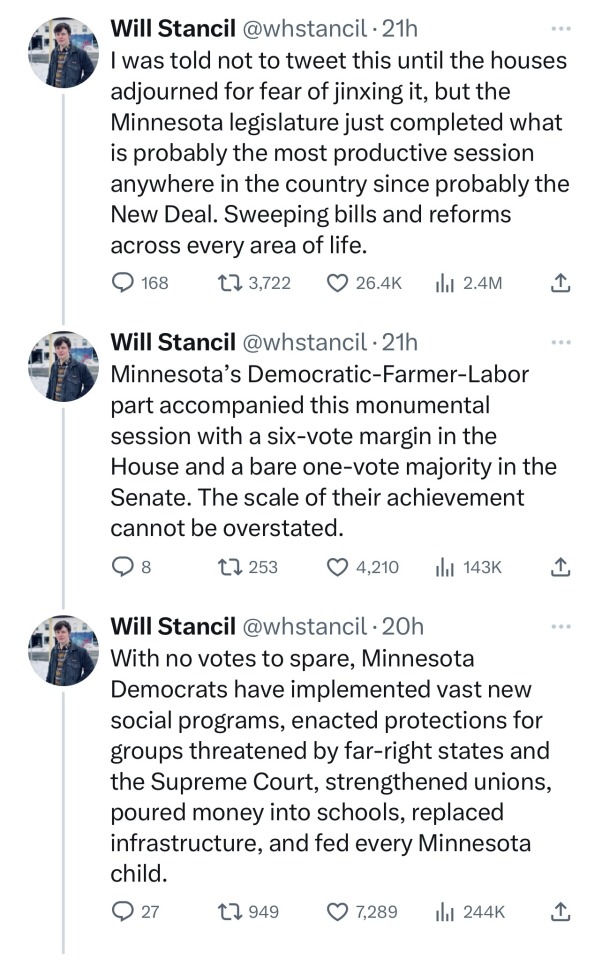


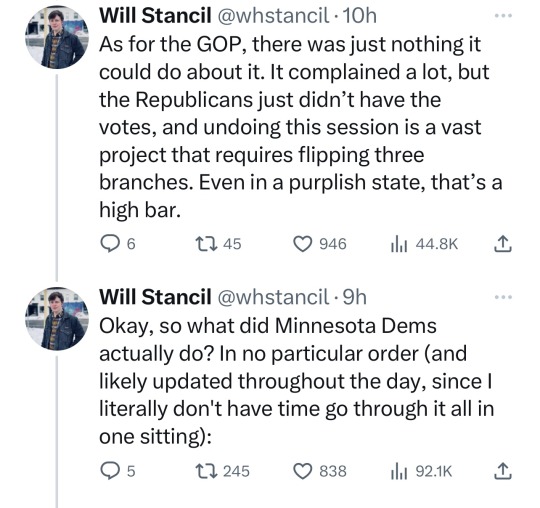





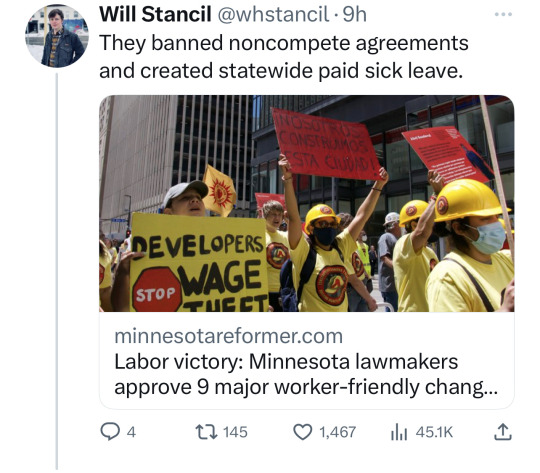
Minnesota Dems enacted a raft of laws to make the state a trans refuge, and ensure people receiving trans care here can't be reached by far-right governments in places like Florida and Texas. (link)
Minnesota Dems ensured that everyone, including undocumented immigrants, can get drivers' licenses. (link)
They made public college free for the majority of Minnesota families. (link)
Minnesota Dems dropped a billion dollars into a bevy of affordable housing programs, including by creating a new state housing voucher program. (link)
Minnesota Dems massively increased funding for the state's perpetually-underfunded public defenders, which lets more public defenders be hired and existing public defenders get a salary increase. (link)
Dems raised Minnesota education spending by 10%, or about 2.3 billion. (link)
Minnesota Dems created an energy standard for 100% carbon-free electricity by 2040. (link)
Minnesota already has some of the strongest election infrastructure (and highest voter participation) in the country, but the legislature just made it stronger, with automatic registration, preregistration for minors, and easier access to absentee ballots. (link)
Minnesota Dems expanded the publicly subsidized health insurance program to undocumented immigrants. This one's interesting because it's the sort of things Dems often balk at. The governor opposed it! The legislature rolled over him and passed it anyway. (link)
Minnesota Dems expanded background checks and enacted red-flag laws, passing gun safety measures that the GOP has thwarted for years. (link)
Minnesota Dems gave the state AG the power to block the huge healthcare mergers that have slowly gobbled up the state's medical system. (link)
Minnesota Dems restored voting rights to convicted felons as soon as they leave prison. (link)
Minnesota Dems made prison phone calls free. (link)
Minnesota Dems passed new wage protection rules for the construction industry, against industry resistance. (link)
Minnesota Dems created a new sales tax to fund bus and train lines, an enormous victory for the sustainability and quality of public transit. Transit be more pleasant to ride, more frequent, and have better shelters, along more lines. (link)
They passed strict new regulations on PFAS ("forever chemicals"). (link)
Minnesota Dems passed the largest bonding bill in state history! Funding improvements to parks, colleges, water infrastructure, bridges, etc. etc. etc. (link)
They're going to build a passenger train from the Twin Cities to Duluth. (link)
I can't even find a news story about it but there's tens of millions in funding for new BRT lines, too. (link)
A wonky-but-important change: Minnesota Dems indexed the state gas tax to inflation, effectively increasing the gas tax. (link)
They actually indexed a bunch of stuff to inflation, including the state's education funding formula, which helps ensure that school spending doesn't decline over time. (link)
Minnesota Dems made hourly school workers (e.g., bus drivers and paraprofessionals) eligible for unemployment during summer break, when they're not working or getting paid. (link)
Minnesota Dems passed a bunch of labor protections for teachers, including requiring school districts to negotiate class sizes as part of union contracts. (Yet another @SydneyJordanMN special here. (link)
Minnesota Dems created a state board to govern labor standards at nursing homes. (link)
Minnesota Dems created a Prescription Drug Affordability Board, which would set price caps for high-cost pharmaceuticals. (link)
Minnesota Dems created new worker protections for Amazon warehouse workers and refinery workers. (link)
Minnesota Dems passed a digital fair repair law, which requires electronics manufacturers to make tools and parts available so that consumers can repair their electronics rather than purchase new items. (link)
Minnesota Dems made Juneteenth a state holiday. (link)
Minnesota Dems banned conversion therapy. (link)
They spent nearly a billion dollars on a variety of environmental programs, from heat pumps to reforestation. (link)
Minnesota Dems expanded protections for pregnant and nursing workers - already in place for larger employers - to almost everyone in the state. (link)
Minnesota Dems created a new child tax credit that will cut child poverty by about a quarter. (link)
Minnesota Democrats dropped a quick $50 million into homelessness prevention programs. (link)
And because the small stuff didn't get lost in the big stuff, they passed a law to prevent catalytic converter thefts. (link)
Minnesota Dems increased child care assistance. (link)
Minnesota Dems banned "captive audience meetings," where employers force employees to watch anti-union presentations. (link)
No news story yet, but Minnesota Dems forced signal priority changes to Twin Cities transit. Right now the trains have to wait at intersections for cars, which, I can say from experience, is terrible. Soon that will change.
Minnesota Dems provided the largest increase to nursing home funding in state history. (link)
They also bumped up salaries for home health workers, to help address the shortage of in-home nurses. (link)
Minnesota Dems legalized drug paraphernalia, which allows social service providers to conduct needle exchanges and address substance abuse with reduced fear of incurring legal action. (link)
Minnesota Dems banned white supremacists and extremists from police forces, capped probation at 5 years for most crimes, improved clemency, and mostly banned no-knock warrants. (link)
Minnesota Dems also laid the groundwork for a public health insurance option. (link)
I’m happy for the people of Minnesota, but as a Floridian living under Ron DeSantis & hateful Republicans, I’m also very envious tbh. We know that democracy can work, and this is a shining example of what government could be like in the hands of legislators who actually care about helping people in need, and not pursuing the GOP’s “culture wars” and suppressing the votes of BIPOC, and inflicting maximum harm on those who aren’t cis/het, white, wealthy, Christian males. BRAVO MINNESOTA. This is how you do it! And the Minnesota Dems did it with a one seat majority, so no excuses. Forget about the next election and focus on doing as much good as you can, while you still can. 👏🏿👏🏿👏🏿👏🏿👏🏿👏🏿👏🏿
👉🏿 https://threadreaderapp.com/thread/1660846689450688514.html
#politics#minnesota#social justice#culture wars#this is what democracy looks like#republicans are evil
25K notes
·
View notes
Text
𝝑𝝔 an: soooo i hope u like this!! read more here!!


cool boyfriend sukuna, who lives with his older brother jin and his little nephew yuuji, bringing you home for the first time since you started dating.
he was always reluctant about you meeting his family because he knows they will make a fuss about it and overall sukuna hates it when people pry into his personal life, which is what they usually do.
of course, jin itadori has noticed that he’s been absent — coming home from university to change and then leave or sometimes just not being home until late night — and has made sure that he isn’t hanging around with druggies or something like that like the responsible adult he is(he just annoyed sukuna into saying ‘fuckin’ hell, i’m not into drugs, i’m just hanging out with my girl!’ while yuuji makes sound effects for the drama of it).
so it’s not long before sukuna finally tells you to get ready to come over to his place. the excited squeal you let out makes his ears bleed, but it’s okay, he thinks with a small smile as he stares up at your window from below your building and waits for you to call him a little later so he can pick you up. he waits for you dutifully and you don’t disappoint him when you come out of your block; looking like an angel sent from above in your white sundress and pretty hair and soft makeup.
he can’t stop his lips from stretching wider as you shyly approach him, looking at him with an expectant gaze, waiting for him to say something.
“aren’t you all dolled up and pretty. ‘s that for me or my brother?” he teases, keeping his hand in his pocket to not ruffle your neatly straightened hair.
he doesn’t expect an answer but you still surprise him, holding onto his shoulders to peck his cheek softly and then move to his ear to whisper, “for you, ‘kuna~”
sukuna sucks in a breath and closes his eyes for a second, contemplating whether he still wants to go to the dinner or push you back into your room and have fun with you on your bed.
“let’s go, ‘kunaa! don’t wanna be late!”
he rolls his eyes and settles you into his(jin’s) car before taking his spot at the driver’s seat and stepping on the gas.
the ride is filled with the soft tunes of your favourite songs(yes, he loves you that much to let you connect to his speakers). you sing along quietly, too immersed in your own thoughts to notice sukuna covering his smile with his free hand, and watch the road, letting the wind blow back your hair and grinning softly. seeing you this excited about meeting his family spreads warmth through his chest.
though, when the car reaches his building, you seemingly get nervous, hand shyly holding onto his to stop him from leaving as you look up at him unsurely.
“what if they don’t like me?”
he flicks your forehead with a roll of his eyes while you shriek and rub the spot soothingly, “if they tolerate me, there’s no way they won’t like you.”
“you’re not that bad, ‘kuna.”
“oh, you don’t even know, baby.”
he tries to ease your nerves on the elevator ride; hand tickling your waist so you smile, lips planting soft kisses onto the revealed skin, reassuring you that his brother and nephew are far less judgmental than he is. the walk to his front door consists of you trying to run away while sukuna tries to tug you back.
and it’s really inconvenient that his front door opens exactly when his hand is raised to hit you on the back of your head so you come to your senses and stop you from being a dumbass. sukuna sighs, scratching his neck instead, while you bow down hurriedly in a greeting.
you feel your face heat up until there is a pair of much smaller feet with different socks in sight and lift your head to lock gazes with a carbon copy of his uncle, little yuuji itadori. he beams at you like the sun itself, so bright and intoxicating, “i’m yuuji! nice to meet you!”
you can’t help but smile back at him before standing straight to introduce yourself to sukuna’s brother and nephew properly.

to sukuna’s surprise, the dinner is far more pleasant than he ever imagined it would be. it’s filled with your and jin’s soft talking, occasionally mixed with sukuna and yuuji’s bickering, but mostly jin asking you about yourself and you responding. you treat jin with respect, evident from the way you think about your answers and ask if it’s okay for him to answer his own question too, and sukuna is happy to see that you two clearly like each other already.
not even talking about yuuji, who can’t seem to take his attention off of you; his small fingers playing with the dangling charm of your bracelet, eyes trained on your pretty face as he listens to whatever you’re telling just as attentively as his father and uncle. sukuna isn’t even gonna deny that it’s a very cute sight.
at some point, before dessert, jin tells him to come and help with the dishes after politely declining your offer to help.
“she’s very sweet.”
“yeah.”
he smiles when he hears yuuji’s laughter from the other room along with your giggles. jin smiles too, continuing to wash the dishes.
“and very smart.”
“damn right she is.”
jin nods, nudging him so he starts drying off the plates. “so how come she chose you?”
as much as sukuna wants to jump on his brother for the implication that he’s not the best of choices(before reluctantly accepting that it’s not that far from the truth) he knows the answer to that question, the corners of his lips curling upwards as he busies his hands with work.
“i chose her first.”
at that, jin stares at him with a surprised look in his bright eyes. they finish washing the dishes in silence and move to the living room once tea is ready.
meanwhile, yuuji is sitting on the couch with you by his side. he’s making origami for you(well, at least he’s trying) while he rambles on about his day and you listen so attentively that sukuna even wonders whatever the hell he’s talking about.
he enters the room with lazy steps and falls back on the armchair with a heavy sigh, catching your gaze and winking at you. you look away with a small smile, refocusing on yuuji who’s gone silent at the moment. the little boy sits closer to you, urging you to lean down with a chubby hand. you oblige, waiting for him to say something in your ear. you giggle at that, hand coming up to cover your mouth before you whispered something back into yuuji’s ear. that makes yuuji all giggly and excited as he wraps his small arms around your neck and places a smooch on your cheek.
sukuna watches the interaction with a soft expression on his face, eyes halfway open and a sweet smile playing on his lips, his fist barely covering the lower half of his face, before he hears a ‘click!’ and turns to see his brother with a camera in his hand.
jin’s smile reminds him of the smile he had when he first had yuuji in his arms. so warm it’s probably enough to melt away a whole iceberg. sukuna feels his chest tighten before wondering if he can make you something more than just his girlfriend for the first time.
+ bonus!
“what did that little dipshit whisper to you?”
“he asked if he was cuter than you.”
“and you said?”
(you said yes.)
“heh, i told him you were the cutest, ‘kuna.”
#— miya writes!#jujustsu kaisen x reader#jujutsu kaisen#sukuna ryomen x reader#sukuna x reader#sukuna x you#ryomen sukuna x reader#sukuna ryomen#jjk x reader#sukuna ryomen x you#jjk sukuna#ryomen sukuna#ryomen sukuna x you#sukuna fluff#cool bf sukuna x loser gf reader
4K notes
·
View notes
Text
hey uh so I haven't seen anyone talking about this here yet, but
the amazon river, like the biggest river in the fucking world, in the middle of the amazon fucking rainforest, is currently going through its worst drought since the records began 121 years ago

picture from Folha PE
there's a lot going on but I haven't seen much international buzz around this like there was when the forest was on fire (maybe because it's harder to shift the narrative to blame brazil exclusively as if the rest of the world didn't have fault in this) so I wanted to bring this to tumblr's attention
I don't know too many details as I live in the other side of the country and we are suffering from the exact opposite (at least three cyclones this year, honestly have stopped counting - it's unusual for us to get hit by even one - floods, landslides, we have a death toll, people are losing everything to the water), but like, I as a brazilian have literally never seen pictures of the river like this before. every single city in the amazonas state is in a state of emergency as of november 1st.


pictures by Adriano Liziero (ig: geopanoramas)
we are used to seeing images of rio negro and solimões, the two main amazon river affluents, in all their grandiose and beauty and seeing these pictures is really fucking chilling. some of our news outlets are saying the solimões has turned to a sand desert... can you imagine this watery sight turning into a desert in the span of a year?


while down south we are seeing amounts of rain and hailstorms the likes of which our infrastructure is simply not built to deal with, up north people who have built everything around the river are at a loss of what to do.
the houses there that are built to float are just on the ground, people who depend on fishing for a living have to walk kilometers to find any fish that are still alive at all, the biodiversity there is at risk, and on an economic level it's hard to grasp how people from the northern states are getting by at all - the main means of transport for ANYTHING in that region is via the river water. this will impact the region for months to come. it doesnt make a lot of sense to build a lot of roads bc it's just better to use the waterway system, everything is built around or floats on the river after all. and like, the water level is so incomprehensibly low the boats are just STUCK. people are having a hard time getting from one place to another - keep in mind the widest parts of the river are over 10 km apart!!

this shit is really serious and i am trying not to think about it because we have a different kind of problem to worry about down south but it's really terrifying when I stop to think about it. you already know the climate crisis is real and the effects are beyond preventable now (we're past global warming, get used to calling it "global boiling"). we'll be switching strategies to damage control from now on and like, this is what it's come to.
I don't like to be alarmist but it's hard not to be alarmed. I'm sorry that I can't end this post with very clear intructions on how people overseas can help, there really isn't much to do except hope the water level rises soon, maybe pray if you believe in something. in that regard we just have to keep pressing for change at a global level; local conditions only would not, COULD NOT be causing this - the amazon river is a CONTINENTAL body of water, it spans across multiple countries. so my advice is spread the word, let your representatives know that you're worried and you want change towards sustainability, degrowth and reduced carbon emissions, support your local NGOs, maybe join a cause, I don't know? I recommend reading on ecological and feminist economics though
however, I know you can help the affected riverine families by donating to organizations dedicated to helping the region. keep in mind a single US dollar, pound or euro is worth over 5x more in our currency so anything you donate at all will certainly help those affected.
FAS - Sustainable Amazon Fundation
Idesam - Sustainable Developent and Preservation Institute of Amazonas
Greenpeace Brasil - I know Greenpeace isn't the best but they're one of the few options I can think of that have a bridge to the international world and they are helping directly
There are a lot of other smaller/local NGOs but I'm not sure how you could donate to them from overseas, I'll leave some of them here anyway:
Projeto Gari
Caritás Brasileira
If you know any other organizations please link them, I'll be sure to reblog though my reach isn't a lot
thank you so much for reading this to the end, don't feel obligated to share but please do if you can! even if you just read up to here it means a lot to me that someone out there knows
also as an afterthought, I wanted to expand on why I think this hasn't made big news yet: because unlike the case of the 2020 forest fires, other countries have to hold themselves accountable when looking at this situation. while in 2020 it was easier to pretend the fires were all our fault and people were talking about taking the amazon away from us like they wouldn't do much worse. global superpowers have no more forests to speak of so I guess they've been eyeing what latin america still has. so like this bit of the post is just to say if you're thinking of saying anything of the sort, maybe think of what your own country has done to contribute to this instead of blaming brazil exclusively and saying the amazon should be protected by force or whatever
#solarpunk#sustainability#environmentalism#climate change#climate crisis#global warming#amazon rainforest#amazon river#geography#brazil#degrowth#punk#global boiling#ecopunk#anti capitalism#climate action#climate activism#the world does not die on my watch#i saw someone use that tag and uh i like it we should make it a thing#long post#:/ sorry i know no one likes lengthy bad news posts on their dashes but i've been thinking about this quite a bit#and i don't really know what to do to help bc i don't have money to donate and i am 10 thousand km away#i think i could be doing more to help but i am already trying my best#again dont feel obligated to share or read this but it would be nice and i would love you forever#have removed lbv from the post
7K notes
·
View notes
Text
This bottom-up control allows the respiratory carbon pathways to adjust to the demand for biosynthetic building blocks, thereby increasing respiratory flexibility.
"Plant Physiology and Development" int'l 6e - Taiz, L., Zeiger, E., Møller, I.M., Murphy, A.
#book quote#plant physiology and development#nonfiction#textbook#bottom up#respiration#carbon#biosynthesis#building blocks#flexibility
0 notes
Note
Is spider silk being as strong as steel another lie from childhood? Bc you're able to break it pretty easily on accident. Genuinely asking.
spider silk IS actually significantly stronger pound-for-pound than the same amount of steel, but only in one direction! and coincidentally, it's the same exact direction that got a bunch of people killed in a submersible last month.
see, when people talk about the "strength" of spider silk versus steel, they're specifically talking about tensile strength:
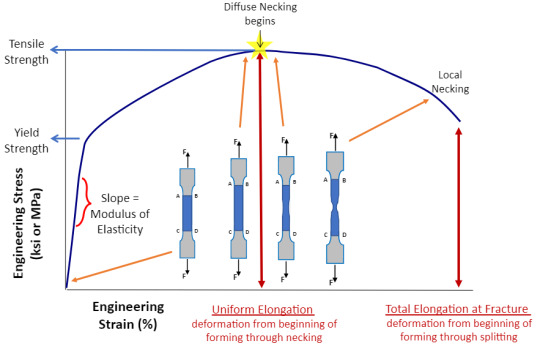
which is specifically the measure of the strength of a material when two forces are pulling at it from the ends, like when a steel cable is holding up a bridge support, or crane cargo:
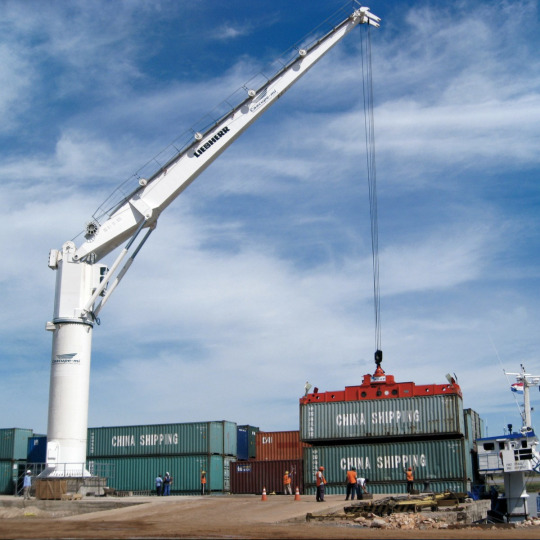
or like when a strand of silk is supporting the entire spider.

that's tensile strength, baby!
but there's another type of strength that's very important to take into consideration when you're actually building things like bridges and submersibles, and spider silk and similar materials like carbon fiber are absolutely garbage at it! and that's compressive strength.
this is basically the inverse of tensile strength, where instead of being yanked at from both ends, the forces are crushing inwards at the material from both directions instead.

you can expect to see these kinds of forces involved in road surfaces, vehicle engines, and again, submersibles.
now steel and its more competent cousin titanium are fucking GREAT at compressive strength! the harder the outside forces are compressing them, the stronger the metals get.
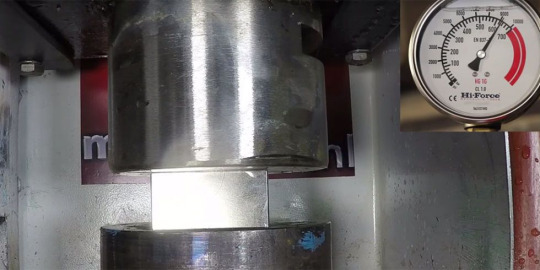
NOT TODAY, FUCKERS
but strand-based materials like spider silk and, again, carbon fiber, are fucking garbage at this. they can take a certain amount of pressure, but each round with compressive forces snaps some of the strands that makes up the material! and those don't grow back, so basically you're just gradually reducing your poor overstressed carbon-fiber hull into a completely useless shell of shattered thread fragments over time as the strands of fiber that actually give it strength die off one by one.

and eventually, something's gotta give! and then people die about it.
this is why, even though spider silk IS stronger than steel in one specific way, we're never going to stop using steel in industrial applications and switch over to spider silk or carbon fiber full time. these materials all have their areas of use, and steel just covers a wider base of applications.

and don't even get me started on shear strength. we'll be here all damn day.
5K notes
·
View notes
Text
Lorelei — Simon ''Ghost'' Riley x Reader | Part I
1 2 3 4 5 6
Synopsis: Aware of the way his lifestyle doesn't align with your dream life and unwilling to quit his life as a soldier, Simon breaks things off with you. It isn't until a year later that he sees you again, a tiny carbon copy of him held in your arms.

''So you're just goin' to sit there and tell me that isn't my daughter.'' Simon says bluntly, tone even yet carrying a snark hidden that you came to listen so many times after working with him— never once directed at you until now.
''It's really none of your business, Ghost.'' You don't even spare a glance at him, simply looking at your little girl, fingers gently running through her short hair. She looks exactly like Simon, though that will never take away your love for her.
''You're not denyin' it.'' He hesitantly sits down next to you, secretly afraid you'll bite his head off. The glare you shoot his way is enough confirmation that you would if you could. You sigh softly, the air leaving your lungs before being sucked back in, not wanting to argue in front of your little girl despite her not understanding words yet.
''Well, what's it to you? Why do you need to know?'' I can't handle you leaving me again.
''Don't be like that.'' His tone is soft, almost pleading. It has been over a year since he broke up with you, yet that doesn't make the loss any easier, not now that he knows he has a daughter, no matter how much you tried to hide it from him.
''Why didn't you tell me?'' He asks gently, feeling like he's walking on eggshells. It's the first time ever he feels that way with you, and he doesn't blame you in the slightest. It takes a few seconds of you thinking before you answer.
''I was terrified of you choosing to walk away from her... to be a deadbeat. I didn't want to have that image of you, because that would have hurt more than the break up.'' Your voice is more calm, though for all the wrong reasons. The familiar tingling all over your nose is back, eyes stinging as you try to hold back tears, too prideful to cry in front of him again.
''That's what you think o' me?'' He replies in nothing but pure disbelief and slight disgust. He would never walk away from his child, no matter how much that would destroy all the walls he has been building for years, stones upon stones carefully piled on top of each other, so strong nothing could ever break through— until you came along.
''I was fucking scared, okay?'' You look away and wipe your eyes with one hand, the other one carefully supporting the neck of the baby on your lap. Simon sighs, his bare hand hesitantly reaching down to trace the features of the tiny girl, being careful with her as if she would break if he applied any pressure. He notices your eyes glued to his hand, eyebrows furrowed. He's about to move his hand away until you adjust the little girl so he can touch her face without the awkward angle.
''Give me one more chance. Please— please, let me be a father to her.'' Simon never begged for anything, not even when he was tortured for months to no end, drugged, beaten like a dog, yet here he is; begging his ex for a chance to keep the girl in his life. You don't reply.
''I'll do everything I can. What I should've done. I want to be here, please.'' He was so damn ready to get on his knees and beg if that's what it took for you to let him be involved in her life. He's not asking you to be together— he knows he doesn't deserve that chance.
''She's looking at you like she knows you.'' Your response is ominous to say the least. You want to deny him, to tell him he doesn't even deserve to be able to touch the little girl you birthed alone, that he doesn't deserve the chance at a family after he destroyed 4 years of a relationship because of the very same thing, but... your little girl is looking up at him with pure admiration and curiosity in her big brown eyes, her tiny hand struggling to hold one of his fingers. Growing up with a single parent yourself, you know she deserves better, and you're willing to put your pride and pain aside to make sure she gets the world.
''Okay.'' You reply after taking a deep breath, holding it into your lungs for what feels like forever, choosing to ignore the strong arms wrapping around you, bringing all three of you close. It feels... right.
[NEXT]
#cod mw2#cod mwii#simon ghost riley#ghost mw2#simon riley#ghost cod#ghost call of duty#ghost x reader#simon ghost riley x reader#simon riley x reader#simon riley x you#simon ghost x reader#simon ghost riley x you#simon ghost x you#call of duty#simon ghost riley imagine#ghost x f!reader#ghost x you#ghost x y/n#dad!simon riley#dad!ghost#ghost mw3#mw2 x reader#mw2 x you
3K notes
·
View notes
Text

The Geneva-based Euro-Mediterranean Human Rights Monitor (Euro-Med) released a report on 30 April urging an investigation into Israel’s potential use of illegal thermal weapons.
“An international committee of experts must be established to look into the weapons Israel has been using as part of its genocide in the Gaza Strip … including the potential use of bombs that produce such high heat that victims’ bodies evaporate,” the Euro-Med report said.
The rights group cites testimonies received from Gaza which revealed a “horrific new level of killing in the Strip.” The bodies of Palestinian victims appear to have been vaporized by the weapons Israel used against residential buildings.
“Thousands of victims remain missing, either because it was impossible to recover them from under the debris in light of insufficient equipment and technical know-how, or because their bodies were either hidden by the Israeli army or no longer exist,” the Euro-Med report reads.
The report continues to say, “A number of the victims killed in these horrifying Israeli raids on residential buildings have vanished and may have turned to ashes, raising questions about the type of bombs used in the attacks.”
Thermobaric weapons, also referred to as vacuum bombs, are two-stage munitions. The first charge disperses a fine aerosol cloud of materials ranging from carbon-based fuel to metal particles. The second charge ignites the materials used, creating a fireball, shock wave, and vacuum as it sucks up the surrounding oxygen.
The blast from these weapons can last significantly longer than conventional explosives, enabling it to vaporize human bodies.
Mass graves in Gaza hospitals previously raided by Israel show that civil defense staff found “bodies without skin,” according to Gaza’s Government Media Office.
According to the Euro-Med report, “The Hague Conventions of 1899 and 1907, the Geneva Conventions of 1949, and international humanitarian law all forbid the use of thermal bombs against civilians in populated civilian areas. The Rome Statute of the International Criminal Court also classifies the use of thermal bombs as a war crime.”
Israel has also illegally deployed white phosphorus weapons on civilians and civilian infrastructure in Gaza and Lebanon.
According to a Washington Post analysis, the white phosphorus munitions used in Lebanon’s south were supplied to Israel by the US.
Palestine’s Agricultural Work Committees Union said that Israel intentionally uses chemical weapons on farmlands in the Gaza Strip to contaminate its soil, posing an increased cancer risk to farmers.
#yemen#jerusalem#tel aviv#current events#palestine#free palestine#gaza#free gaza#news on gaza#palestine news#news update#war news#war on gaza#gaza genocide#genocide#war crimes
2K notes
·
View notes
Text
Instead of burning fossil fuels to reach the temperatures needed to smelt steel and cook cement, scientists in Switzerland want to use heat from the sun. The proof-of-concept study uses synthetic quartz to trap solar energy at temperatures over 1,000°C (1,832°F), demonstrating the method’s potential role in providing clean energy for carbon-intensive industries. A paper on the research was published on May 15 in the journal Device.[...]
Glass, steel, cement, and ceramics are at the very heart of modern civilization, essential for building everything from car engines to skyscrapers. However, manufacturing these materials demands temperatures over 1,000°C and relies heavily on burning fossil fuels for heat. These industries account for about 25% of global energy consumption. Researchers have explored a clean-energy alternative using solar receivers, which concentrate and build heat with thousands of sun-tracking mirrors. However, this technology has difficulties transferring solar energy efficiently above 1,000°C.
To boost the efficiency of solar receivers, Casati turned to semitransparent materials such as quartz, which can trap sunlight—a phenomenon called the thermal-trap effect. The team crafted a thermal-trapping device by attaching a synthetic quartz rod to an opaque silicon disk as an energy absorber. When they exposed the device to an energy flux equivalent to the light coming from 136 suns, the absorber plate reached 1,050°C (1,922°F), whereas the other end of the quartz rod remained at 600°C (1,112°F).
“Previous research has only managed to demonstrate the thermal-trap effect up to 170°C (338°F),” says Casati. “Our research showed that solar thermal trapping works not just at low temperatures, but well above 1,000°C. This is crucial to show its potential for real-world industrial applications.”
Using a heat transfer model, the team also simulated the quartz’s thermal-trapping efficiency under different conditions. The model showed that thermal trapping achieves the target temperature at lower concentrations with the same performance, or at higher thermal efficiency for equal concentration. For example, a state-of-the-art (unshielded) receiver has an efficiency of 40% at 1,200°C, with a concentration of 500 suns. The receiver shielded with 300 mm of quartz achieves 70% efficiency at the same temperature and concentration. The unshielded receiver requires at least 1,000 suns of concentration for comparable performance.
17 May 24
932 notes
·
View notes